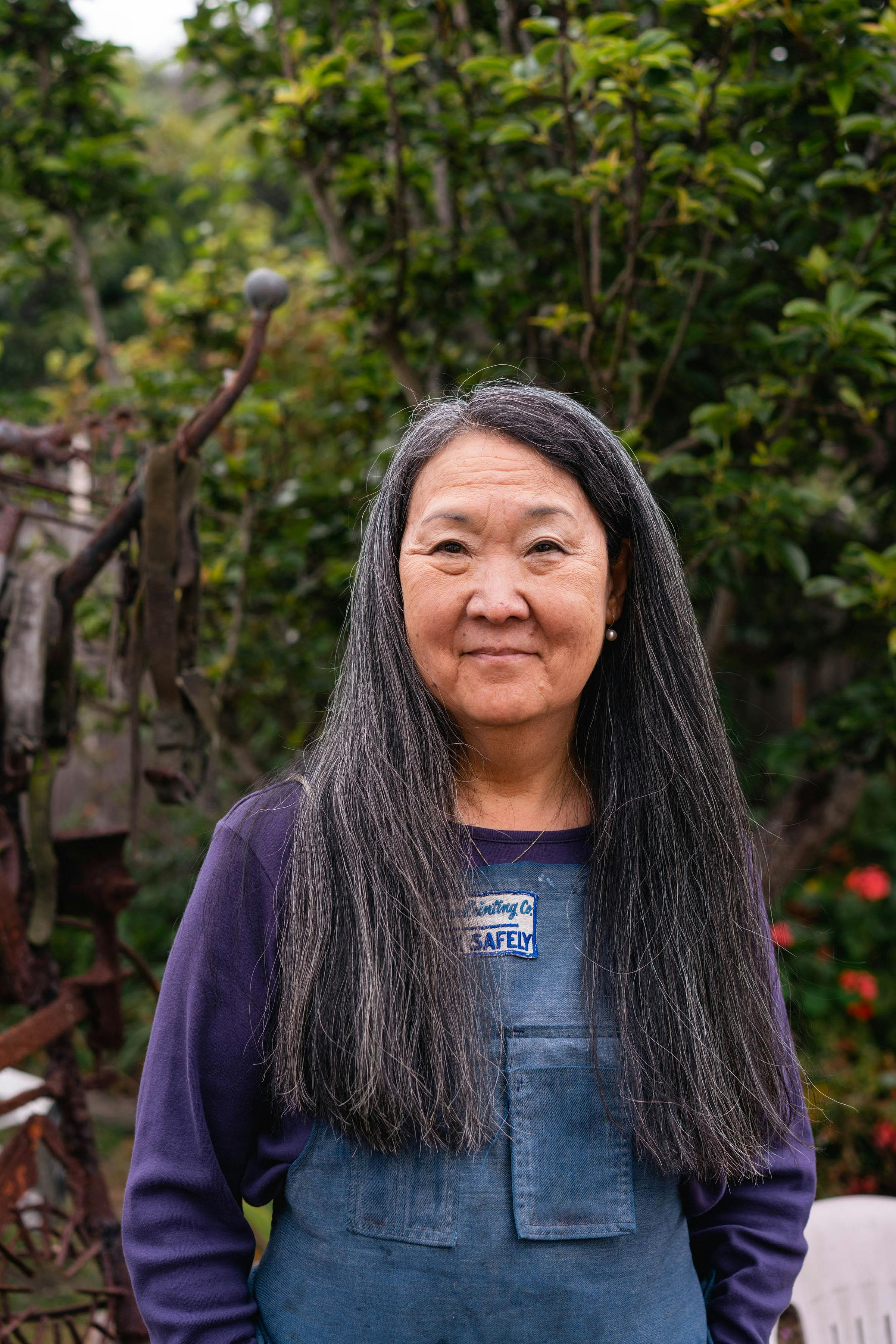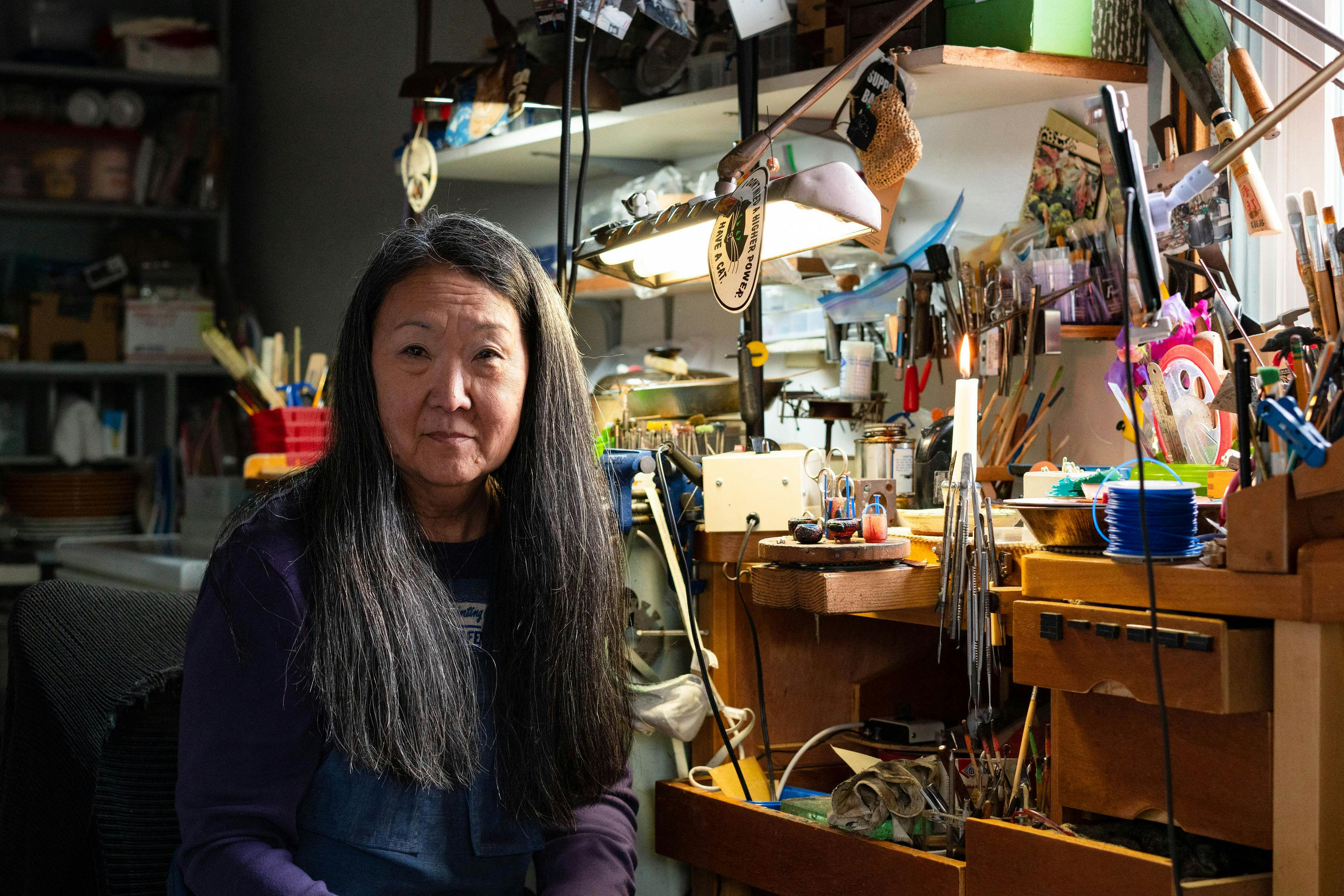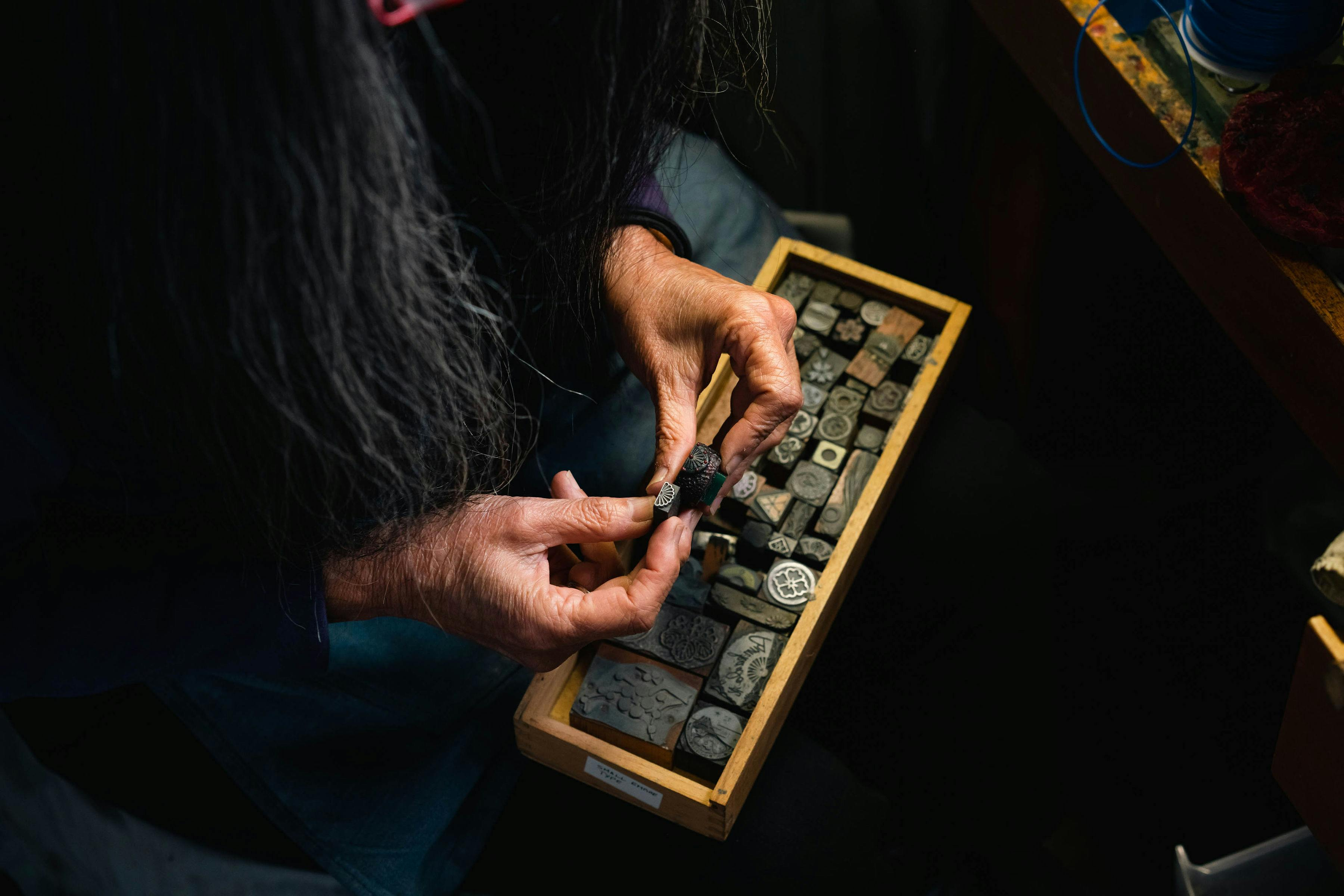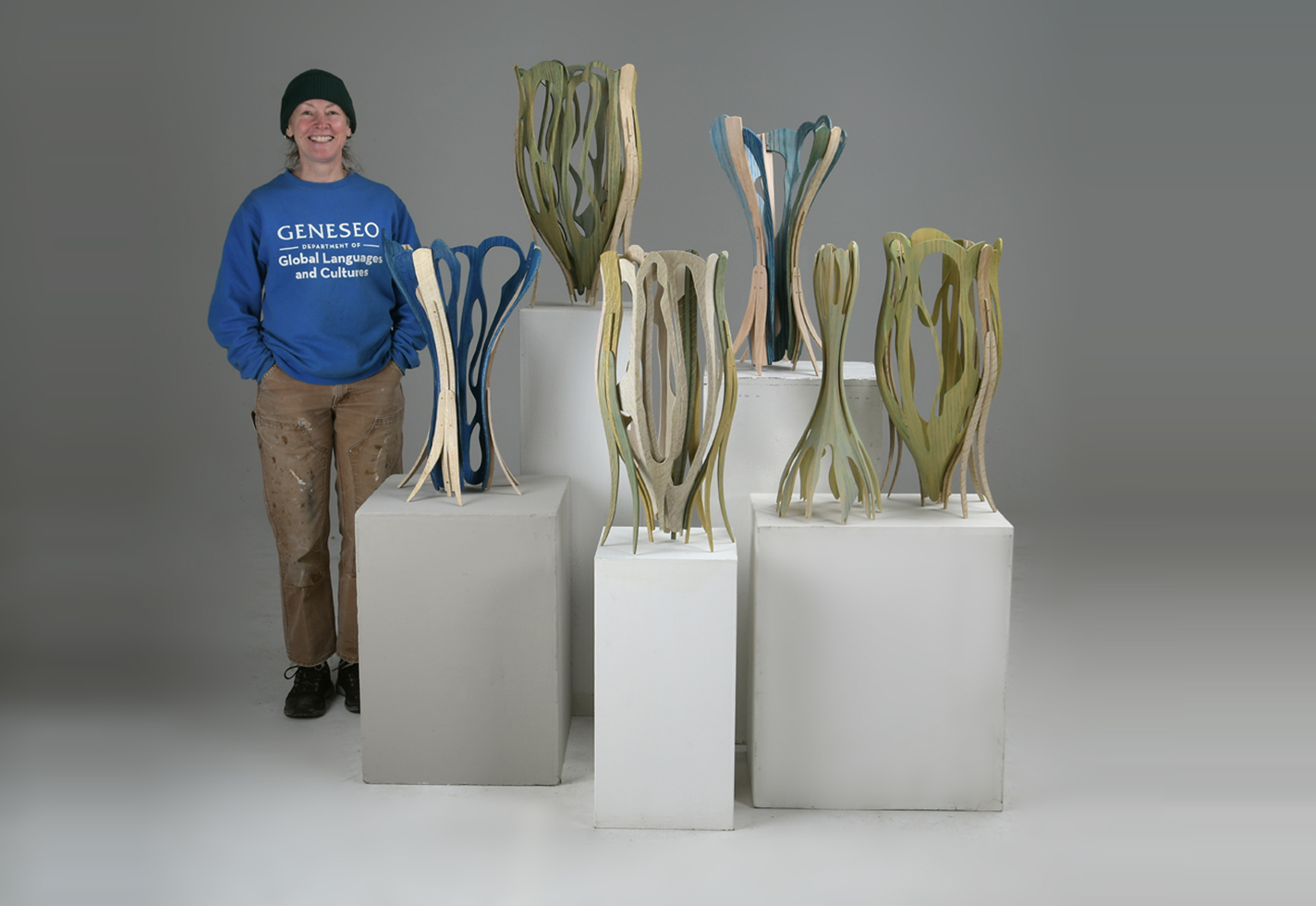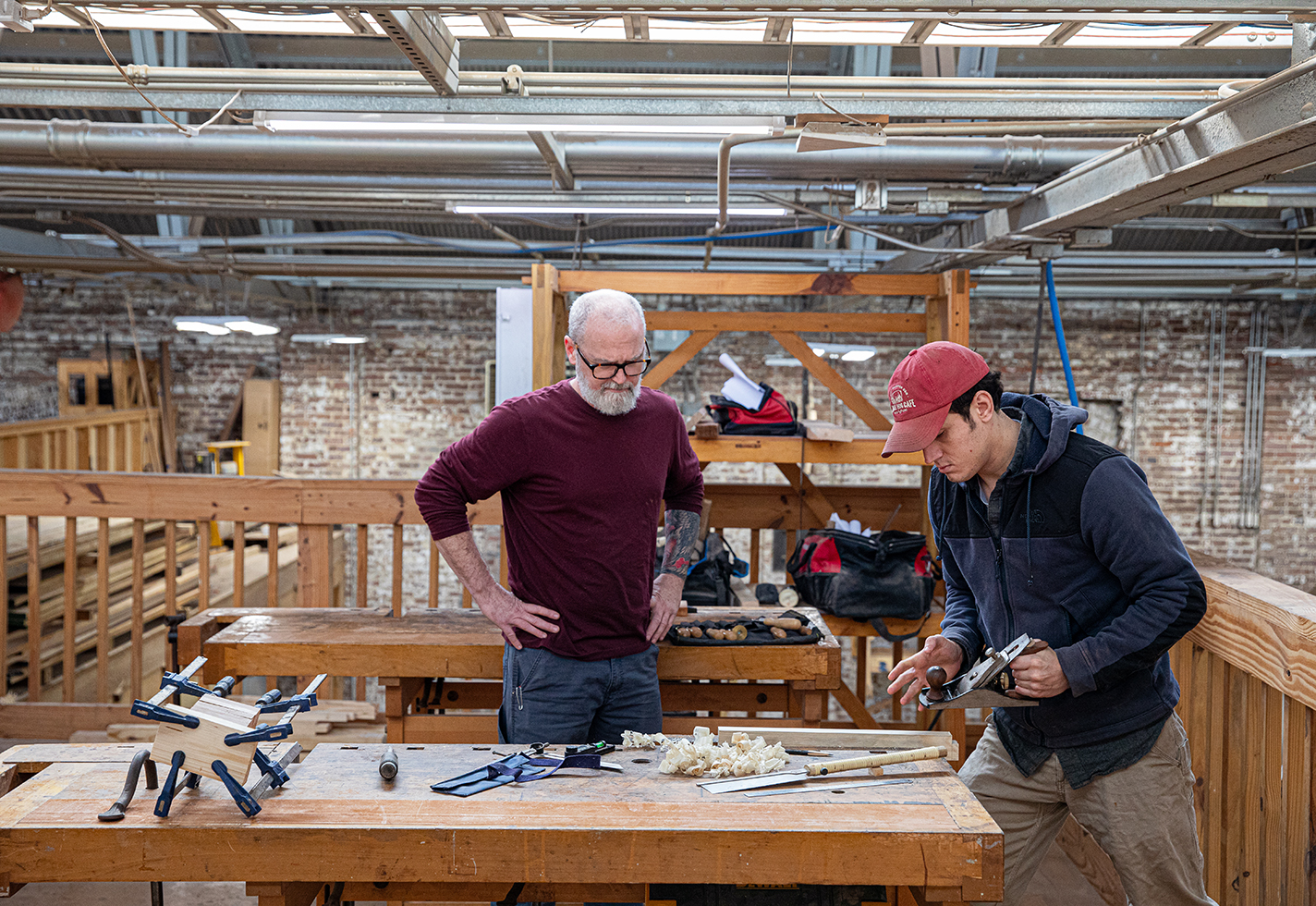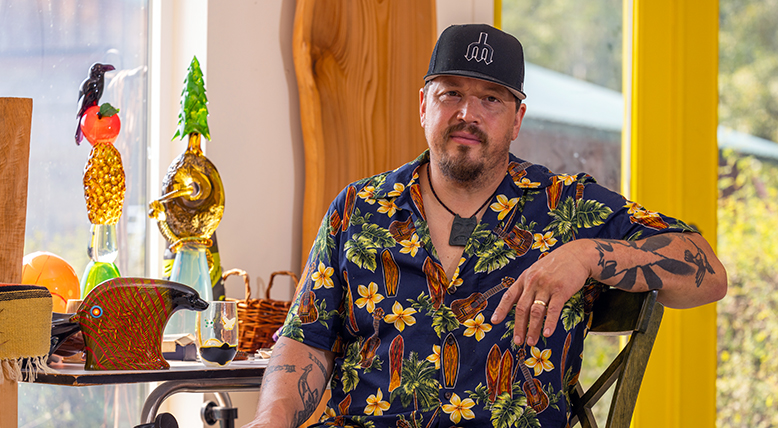Suzye Ogawa creates richly detailed baskets at miniature scale.
Ogawa grew up immersed in traditional Japanese arts and crafts in Little Tokyo, Los Angeles. Her father, Howard Ogawa, was a pioneering dental technician there with a lab full of tools. After taking a basket-making class in the 1980s, Suzye combined these influences into her signature miniature lost-wax cast-bronze vessels, which incorporate textured surfaces and natural fibers such as sweetgrass and silk. “I had the metal and the fiber, I like to work small—I’m nearsighted—and I had this really rich Japanese cultural environment that was subliminally giving me cues,” she says. Now living in the quiet Northern California town of Fort Bragg, she has been selling her work at craft fairs since 1987 and has shown frequently at ACC events. Jon Spayde wrote about her work in “Tiny Treasures” in the Spring 2023 issue of American Craft.
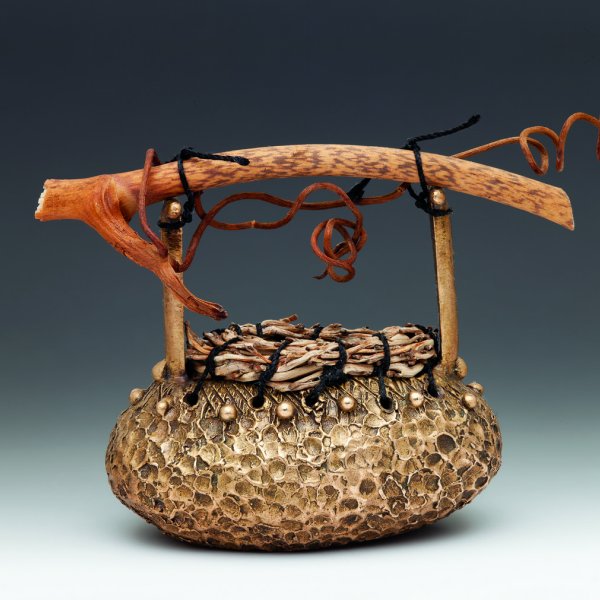
Ogawa's Untitled, 2021, lost wax cast bronze, coiled palm fruit stalk, grapevine, silk, 1.5 x 2 x 1 in.
